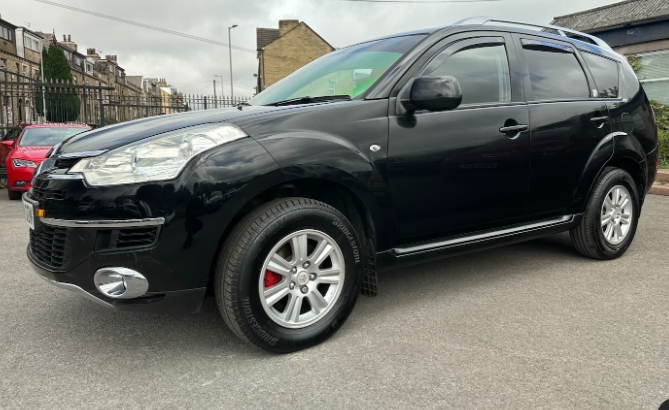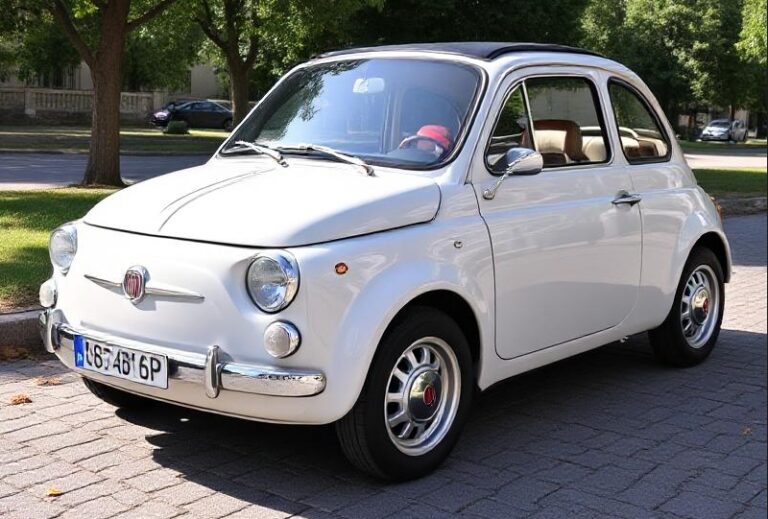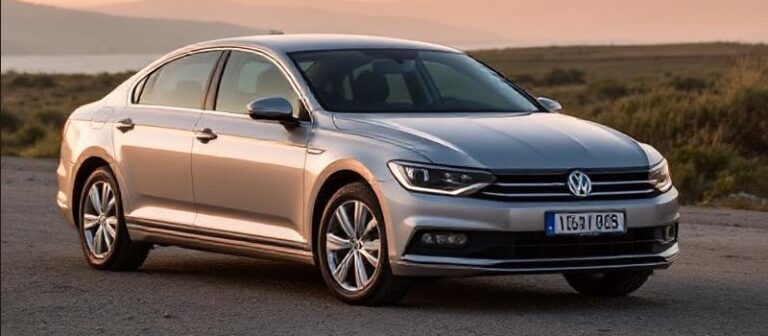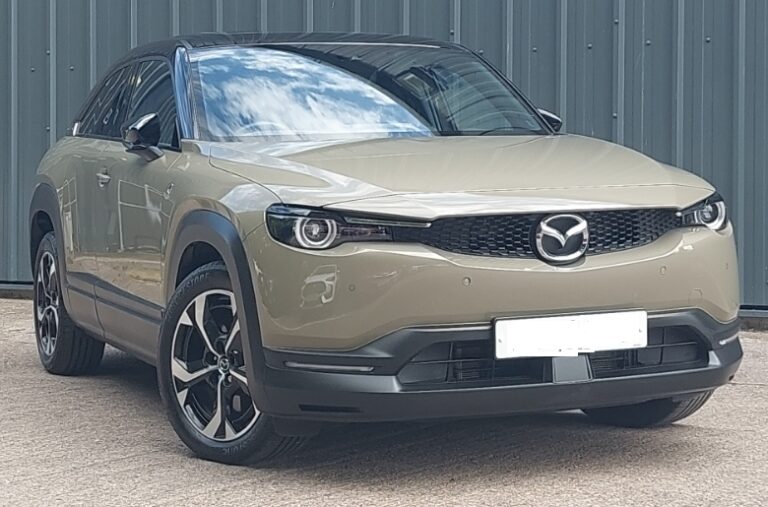The Bold Experiment: Tracing the Evolution of the Citroën C-Crosser
The automotive landscape is a constantly shifting terrain, with manufacturers forever seeking to capture new market segments and cater to evolving consumer desires. In the mid-2000s, a significant trend emerged: the rise of the Sport Utility Vehicle (SUV). Consumers were drawn to their commanding presence, perceived practicality, and versatile nature. French automaker Citroën, a brand long associated with avant-garde design and innovative engineering, was not about to be left behind. While they had dabbled in higher-riding vehicles before, the C-Crosser, launched in 2007, marked their most concerted effort yet to enter the burgeoning mainstream SUV market.
However, the story of the Citroën C-Crosser is not one of entirely in-house developed innovation. It’s a tale of strategic partnership and a unique approach to badge engineering, offering a fascinating glimpse into the complexities of modern automotive manufacturing. Understanding the C-Crosser’s evolution requires acknowledging its roots and the circumstances of its creation.
The Mitsubishi Connection: A Foundation Built Elsewhere
The Citroën C-Crosser was, in essence, a rebadged and slightly restyled version of a Japanese SUV. This was part of a collaborative agreement between the PSA Group (Peugeot, Citroën, and DS) and Mitsubishi Motors. The platform underpinning the C-Crosser was the same as that used for the Mitsubishi Outlander (second generation, launched in 2005) and subsequently the Peugeot 4007. This collaboration allowed PSA to quickly enter the SUV segment without the immense cost and time investment of developing a completely new vehicle from the ground up.
The C-Crosser was officially unveiled in 2007 and production commenced shortly thereafter. It was primarily manufactured at Mitsubishi’s Mizushima plant in Japan, alongside its corporate cousins.
Model and Trim Levels: A Focused Offering
Given its relatively short production run and its position as a niche product within Citroën’s diverse portfolio, the C-Crosser didn’t boast an overwhelmingly extensive range of models and trim levels. The focus was on offering a well-equipped, practical family SUV with a distinct Citroën flavour.
Throughout its production life (2007-2012), the C-Crosser was primarily offered with two core engine options, both diesel, reflecting the European market’s preference for fuel efficiency in this segment.
Engine Options:
2.0 HDi (136 bhp): This was the entry-level diesel engine, a reliable and economical choice for everyday driving. It provided adequate performance for a family SUV.
2.2 HDi (156 bhp): The more powerful diesel option offered a noticeable boost in performance, particularly for overtaking and carrying heavier loads.
Trim Levels:
Citroën typically structured its trim levels to offer increasing levels of luxury and features. For the C-Crosser, the main trim levels generally included:
SX: This was the base trim level, offering a good foundation of essential features. While not stripped down, it aimed to provide value. Standard equipment would typically include:
Air conditioning
Electric windows (front and rear)
Electrically adjustable and heated door mirrors
Remote central locking
CD player with steering wheel controls
ABS with EBD (Electronic Brakeforce Distribution)
Multiple airbags
Power steering
Body-coloured bumpers and door handles
VTR+: This was the mid-range trim, adding a significant upgrade in comfort and convenience features. Moving up to VTR+ would typically introduce:
Alloy wheels
Climate control (often dual-zone)
Cruise control
Automatic headlights and wipers
Leather-trimmed steering wheel and gear knob
Front fog lights
Privacy glass (rear windows)
Potentially a more advanced audio system or Bluetooth connectivity
Exclusive: This represented the top-of-the-line trim, aiming to provide a more premium and luxurious experience. The Exclusive trim would build upon the VTR+ features and often include:
Full leather upholstery
Heated front seats
Electric driver’s seat adjustment
Xenon headlights
Premium sound system
Navigation system (sometimes an optional extra on lower trims, but often standard on Exclusive)
Chrome exterior detailing
It’s worth noting that specific standard and optional equipment could vary slightly depending on the model year and the specific market where the C-Crosser was sold. However, these three trims formed the core offering throughout its lifecycle.
Key Features and Citroën’s Touches:
While sharing its fundamental DNA with the Outlander and 4007, Citroën did imbue the C-Crosser with its own distinct characteristics. The exterior styling, while not a radical departure, featured Citroën’s signature grille design, revised headlights, and taillights, giving it a family resemblance to other models in the lineup like the C4. Inside, the dashboard layout and materials were tweaked to align with Citroën’s design language.
A notable feature of the C-Crosser, inherited from its Mitsubishi origins, was its optional seven-seat configuration. This significantly enhanced its practicality for larger families, a key selling point in the SUV segment. The third row of seats was typically more suited for children or occasional use by adults, but it provided valuable flexibility.
Another important aspect was the all-wheel-drive (AWD) system. The C-Crosser was generally offered with an electronically controlled AWD system that could automatically distribute power between the front and rear wheels, enhancing traction and stability in various conditions. Drivers could also typically select different modes, such as 2WD (front-wheel drive for maximum economy on good roads) and Lock (which locks the center differential for improved grip in challenging terrain).
The C-Crosser in the Market: A Curious Case
The Citroën C-Crosser entered a highly competitive SUV market. While it offered a compelling package of practicality, versatility, and distinctive styling, it faced stiff competition from established players like the Nissan Qashqai, Kia Sportage, Hyundai Tucson, and its own corporate sibling, the Peugeot 4007.
Despite its merits, the C-Crosser struggled to achieve the same level of sales success as some of its rivals. Several factors likely contributed to this:
Brand Perception: Citroën, while respected for its innovation, was not traditionally seen as a dominant force in the SUV segment. Consumers often gravitated towards brands with a more established SUV heritage.
Mitsubishi Origins: While the partnership offered speed to market, some buyers might have perceived the C-Crosser as simply a rebadged Mitsubishi, potentially undervaluing the Citroën offering.
Styling: While distinctive, the C-Crosser’s styling, particularly the front end, was a point of contention for some. It was bold, but perhaps not universally appealing.
Competition: As mentioned, the SUV market was crowded. The C-Crosser had to carve out its niche against well-established and popular models.
The Inevitable Evolution: Phased Out
The Citroën C-Crosser’s production run was relatively short, concluding in 2012. This was not an anomaly but rather a calculated decision by PSA. The partnership with Mitsubishi for this specific platform came to an end, and PSA focused its strategy on developing its own distinct SUV offerings.
The spiritual successor to the C-Crosser within the Citroën lineup would be the Citroën C4 Aircross, which was launched in 2012. The C4 Aircross also shared its platform, this time with the Mitsubishi ASX, and was built in Japan. However, the C4 Aircross represented a clearer attempt by Citroën to integrate its design language more deeply into the vehicle and appeal to a slightly different segment of the SUV market, often perceived as more of a crossover than a rugged SUV.
.
THIS is GOOD stuff if your car is in need:

.
Legacy of the C-Crosser:
The Citroën C-Crosser, though a relatively brief chapter in the brand’s long history, remains an interesting case study. It exemplifies:
Strategic Partnerships: The importance of collaborations in the automotive industry to quickly gain access to new market segments.
Badge Engineering: The practice of rebadging and slightly restyling existing vehicles from other manufacturers.
Citroën’s Willingness to Experiment: Even when relying on external platforms, Citroën sought to inject its unique design philosophy and character into the final product.
The Evolving SUV Market: The C-Crosser was a direct response to the growing consumer demand for SUVs, showcasing how manufacturers adapted to changing trends.
While the C-Crosser might not be as iconic as the DS or the 2CV, it carved out its own identity as a practical, well-equipped, and distinctly French-flavored SUV during its tenure. It served its purpose for Citroën, allowing them to participate in a crucial market segment, and ultimately paved the way for their subsequent, more independently developed SUV models. The C-Crosser stands as a testament to a bold, albeit brief, experiment in a segment that continues to define automotive trends.







